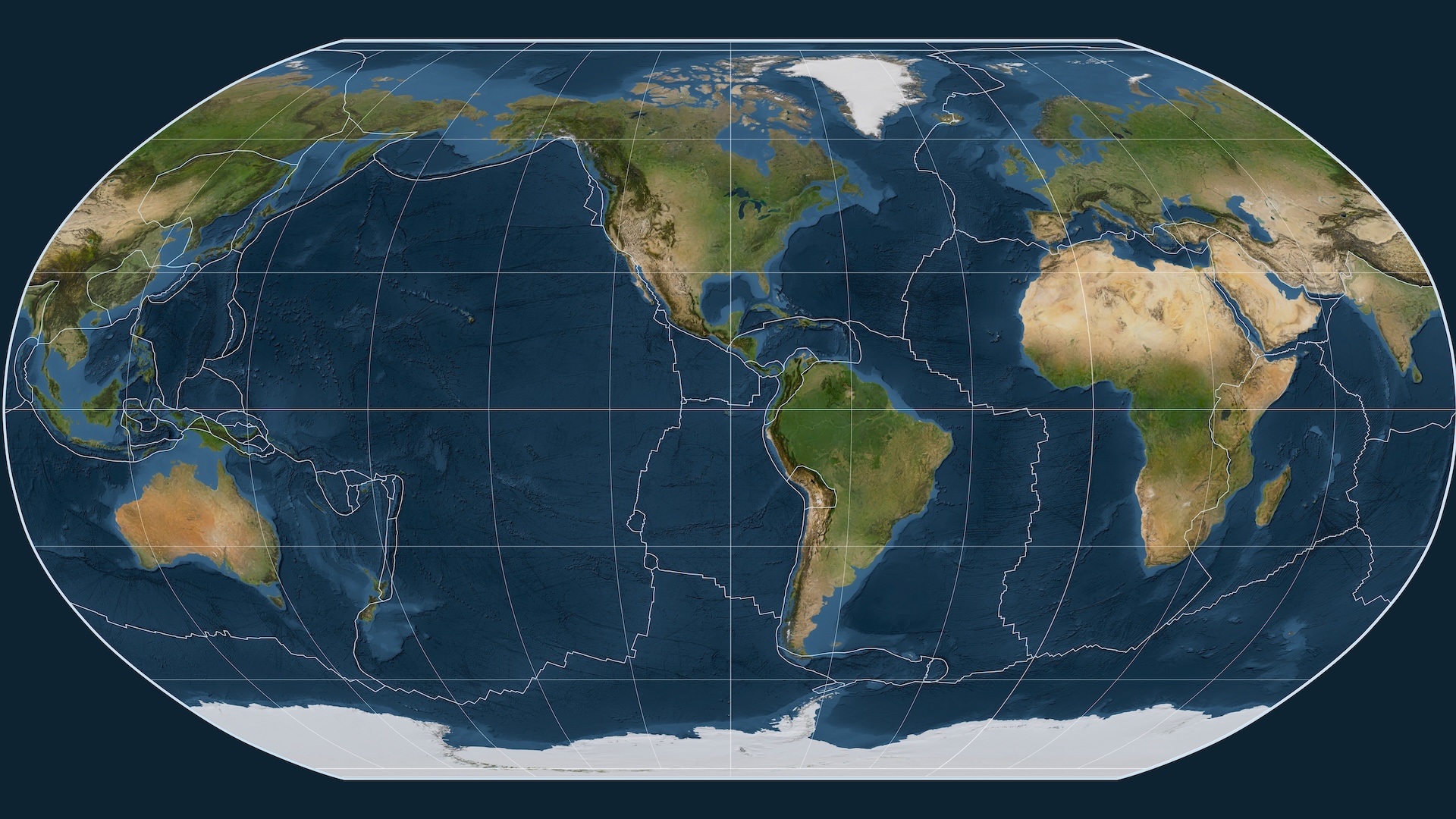
It's one of many unique things about Earth: Unlike every other known planet in the universe, Earth's surface is made up of rigid plates that shift, crash into each other and dive into the planet's interior.
But when did Earth's surface splinter into tectonic plates? And when did those plates start moving? It's an important question because plate tectonics seems to fuel the evolution and complexity of life.
Surprisingly, geologists don't have a good answer for when plate tectonics emerged, and estimates range from 700 million years ago to before 4 billion years ago, when Earth was still in its infancy.
The oldest unambiguous evidence of modern plate tectonics dates to the Neoproterozoic (1 billion to 541 million years ago), Robert Stern, a geoscientist at the University of Texas, Dallas, told Live Science. That's when the geological record reveals plentiful ophiolites — bits of oceanic crust shoved onto continents — and blueschists, which are metamorphic rocks that form in subduction zones, or areas where the plates collide and dive into the planet's interior. Subduction is a feature of plate tectonics, so these widespread rocks show with certainty that plates were crashing into and sliding under one another.
But many geologists think Stern's view is too conservative.
Critics agree that rocks indicative of plate tectonics became widespread for the first time 700 million to 900 million years ago. But these rocks could have existed earlier and been wiped away by time, they suggest.
For example, the Indian subcontinent collided with southern Asia a mere 55 million years ago, and many of those rocks have already eroded away, said Mark Harrison, a professor emeritus of geoscientist at UCLA. "The Tibet-India collision isn't over yet," Harrison told Live Science. If the evidence of tectonics is disappearing even as a plate-to-plate collision is occurring, what hope is there of finding these same rocks from the much more distant past?
Stern argues that there is evidence for a little episode of subduction 1.8 billion years ago that didn't quite take, bolstering his viewpoint that if there had been plate tectonics consistently before about 800 million years ago, it would be clearer in the rock record. (Other scientists see this blip as evidence that plate tectonics was well underway by then.)
Many researchers put the transition to plate tectonics much earlier. There are numerous signs of some kind of geologic shift during the Archean Eon (4 billion to 2.5 billion years ago), with estimates of exactly when ranging from 2.5 billion to 3.8 billion years ago. For example, at least one ophiolite preserved today dates back 2.5 billion years.
Another line of evidence is in the chemistry of the crust. If the crust is brand-new volcanic rock, its chemistry will look much like the mantle from whence it came. If it is remelted and recycled by plate tectonics, this chemistry shifts. An influential 2012 study found that more crust began to be recycled around 3 billion years ago. This could mark the shift to subduction destroying and reworking crust, said study co-author Chris Hawkesworth, an emeritus professor of geosciences at the University of St. Andrews in the U.K..
Research on zircons — minerals that survive even when the rocks around them melt and reform — suggests that Earth's crust shifted earlier, around 3.8 billion years ago. "We start to see zircon structures that start to look more and more like what we see in subduction zones today," study author Nadja Drabon, an Earth and planetary scientist at Harvard University, told Live Science. Crust also became shorter-lived around that time, again suggesting the recycling process of subduction.
But does this transition reflect true plate tectonics? Zircon research published in 2023, which investigated the magnetic field conditions on Earth when the minerals formed, suggests that these grains more or less stayed where they were made until 3.4 billion years ago, hinting that landmasses weren't on the move until that point.
It's possible that different aspects of plate tectonics emerged at different times, Drabon noted. Perhaps subduction started 3.8 billion years ago, but it took time for the continents to start drifting around the globe.
A newer and more controversial idea suggests that Earth developed plate tectonics in the Hadean (4.5 billion to 4 billion years ago). This idea springs from increasing evidence that the newborn Earth was a surprisingly modern-looking place with oceans and continents — a conclusion drawn from zircon research and the chemistry of Earth's oldest surviving rocks. Some studies of Earth's oldest zircons, which date to this mysterious period of geologic history, found that they look remarkably like zircons that form in volcanic arcs over subduction zones today. And theoretical modeling shows it's possible for plate tectonics to exist in Hadean conditions, Jun Korenaga, a professor of Earth and planetary sciences at Yale University, told Live Science.
Every piece of evidence for each of these origin stories comes with weaknesses. For instance, the vast majority of very old zircons come from one location, the Jack Hills in Australia, and might not represent what was happening on the rest of the planet. The oldest rocks might also be weird — perhaps they're still hanging around today because they weren't like all the other rocks on ancient Earth. And you don't want to get in the middle of computer modelers when they're arguing about assumptions of the state of the mantle 4 billion years ago.
"It's shocking to realize there's no consensus view on when [plate tectonics] started," Jesse Reimink, a geoscientist at The Pennsylvania State University told Live Science.
Editor's Note: This story was corrected at 2:40 p.m. EST to correct one mention of an age estimate for the emergence of plate tectonics. It may have emerged as recently as 700 million, not 700 billion, years ago.







